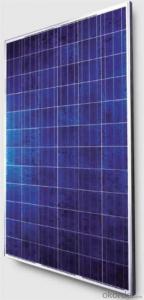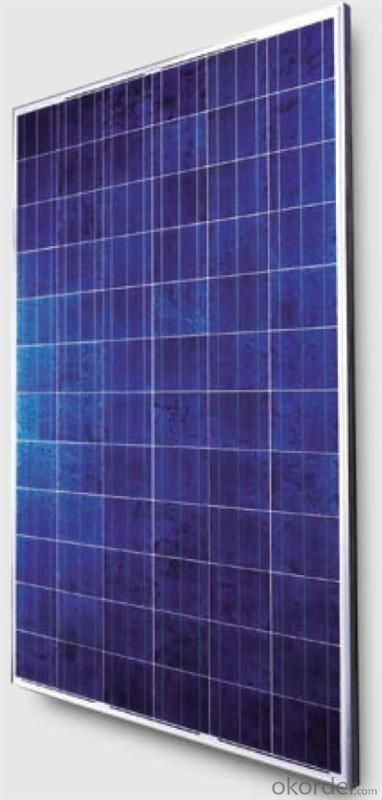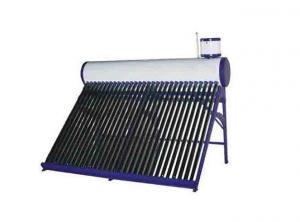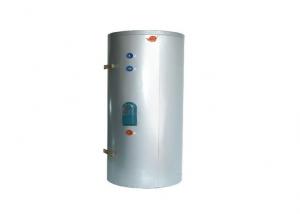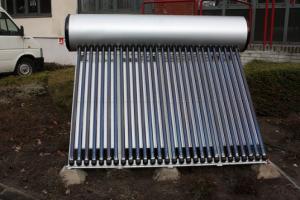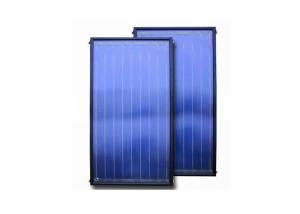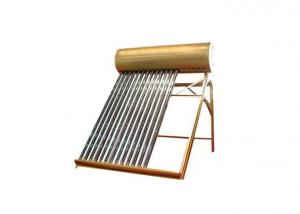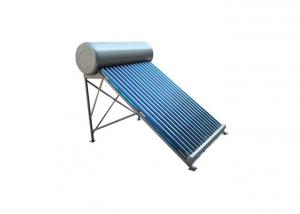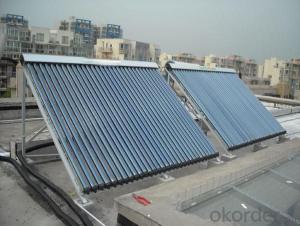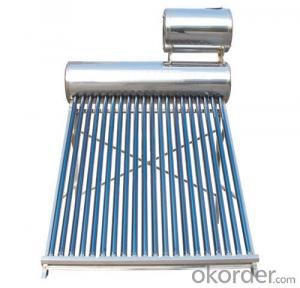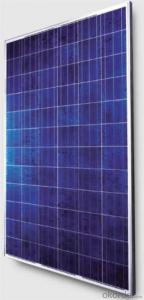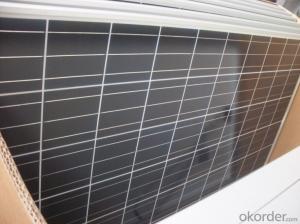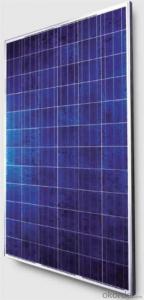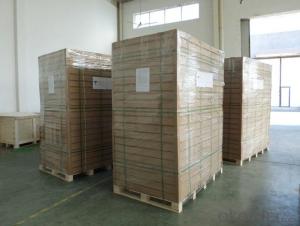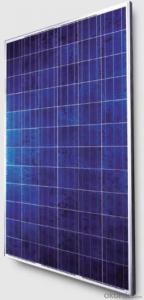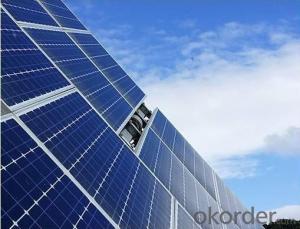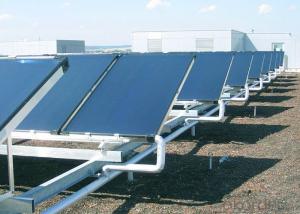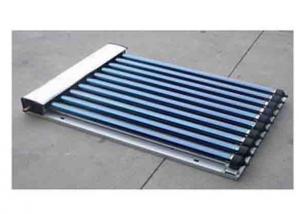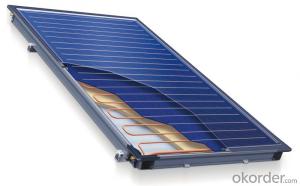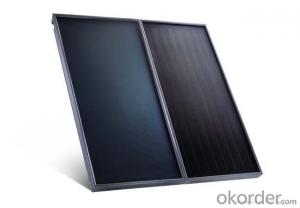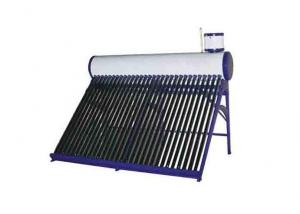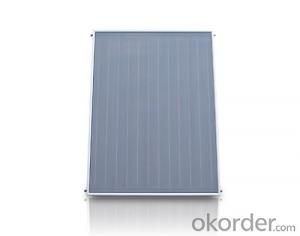Flexible Solar Collectors - CNBM Brand Silicon Modules Made in China
- Loading Port:
- Tianjin
- Payment Terms:
- TT OR LC
- Min Order Qty:
- 1 pallet
- Supply Capability:
- 100000000 pallet/month
OKorder Service Pledge
OKorder Financial Service
You Might Also Like
Solar modules use light energy (photons) from the sun to generate electricity through the photovoltaic effect. The majority of modules use wafer-based crystalline silicon cells or thin-film cells based on cadmium telluride or silicon. The structural (load carrying) member of a module can either be the top layer or the back layer. Cells must also be protected from mechanical damage and moisture. Most solar modules are rigid, but semi-flexible ones are available, based on thin-film cells.
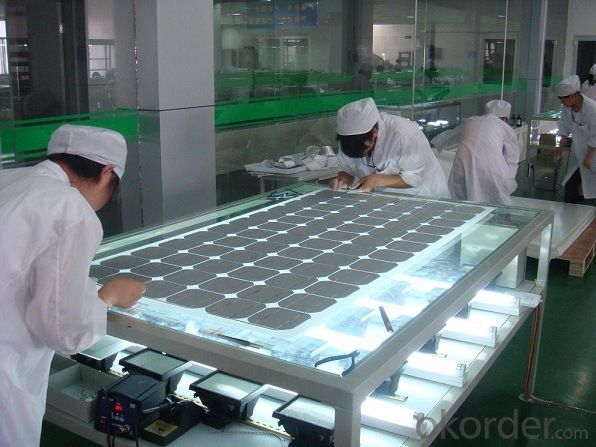
Specifications:
solar panels from 5W--300W, made of TAIWAN MOTECH brand cells,with CO in TAIWAN,Mono and Poly with VDE,IEC,CSA,UL,CE,ISO.
We import solar cells from Taiwan Motech brand, with this CO in taiwan and our CSA certification,we can still sell goods to Anti-dumping areas like USA. Our main products are solar panels, off grid and on grid solar home systems , solar street lighting systems, solar water heating system,solar pump,solar attic fan, solar DC LED lights and solar DC refrigerators.
Certificates : ISO, CE, VDE IEC, MCS, CSA-UL, CEC.
Delivery time: sample 10days, order 25-30days.
Sample: charged.
Payment term: T/T 30% as deposit, 70% before shipment. Or irrevocable L/C at sight.
Trade term: FOB Shenzhen or CIF destination seaport or Airport.
Characteristics:
I.Solar Cell : High efficiency crystalline solar cell. Even if under the weak light, the solar module can produce maximum power output.
II.Tempered glass (toughened glass): Anti-reflecting coating and high transmission rate glass increase the power output and mechanical strength of solar module.
III.EVA and TPT: Using high quality EVA and TPT to prevent destroying and water.
IV.AI frame: Without screw, corner connection. 6 holes on the frame can be installed easily.
V.Junction box: Multi function junction box with water proof.
VI.Long lifetime: ≥25 years; Less power decrease.
VII.Good performance of preventing from atrocious weather such as wind and hails.
VIII.Resisting moisture and etching effectively, not effected by geology.
IX.The certificate issued by international authority: UL, TUV, IEC, VDE, CE.
Quality and Safety
1. Rigorous quality control meets the highest international standards.
2. High-transmissivity low-iron tempered glass, strong aluminium frame.
3. Using UV-resistant silicon.
4. IS09001/14001/CE/TUV/UL
Warranties
1. 10 years limited product warranty
2. 15 years at 90% of the minimal rated power output
3. 25 years at 80% of the minimal rated power output
Technical date :
ITEM NO.: | Poly 156*156 cell ,60pcs . Power range from 230Wp-260Wp | ||||||
Maximum Power(W) | 230 | 235 | 240 | 245 | 250 | 255 | 260 |
Optimum Power Voltage(Vmp) | 29.4 | 29.5 | 29.7 | 30.1 | 30.3 | 30.5 | 30.7 |
Optimum Operatige Current(Imp) | 7.83 | 7.97 | 8.08 | 8.14 | 8.25 | 8.37 | 8.48 |
Open Circuit Voltage(Voc) | 36.7 | 36.8 | 36.9 | 37.1 | 37.3 | 37.5 | 37.7 |
Short Circuit Current(Isc) | 8.52 | 8.59 | 8.62 | 8.65 | 8.69 | 8.73 | 8.78 |
Solar Cell: | 156*156 Poly | ||||||
Number of Cell(pcs) | 6*10 | ||||||
Name of Solar Cells | Polycrystalline Cell | ||||||
Size of Module(mm) | 1650*992*40/45/50 | ||||||
Cable & Connector Type | Pass the TUV Certificate | ||||||
Frame(Material Corners,etc.) | Aluminium-alloy | ||||||
Back sheet | TPT | ||||||
Weight Per Piece(KG) | 19.5KG | ||||||
FF (%) | 70-76% | ||||||
Junction Box Type | Pass the TUV Certificate | ||||||
Tolerance Wattage(e.g.+/-5%) | ±3%, or 0-3% | ||||||
Front Glass Thickness(mm) | 3.2 | ||||||
Temperature Coefficients of Isc(%) | +0.04 | ||||||
Temperature Coefficients of Voc(%) | -0.38 | ||||||
Temperature Coefficients of Pm(%) | -0.47 | ||||||
Temperature Coefficients of Im(%) | +0.04 | ||||||
Temperature Coefficients of Vm(%) | -0.38 | ||||||
Temperature Range | -40°C to +85°C | ||||||
Surface Maximum Load Capacity | 5400Pa | ||||||
Allowable Hail Load | 23m/s ,7.53g | ||||||
Bypass Diode Rating(A) | 12 | ||||||
Warranty | 90% of 10 years, 80% of 25 years. | ||||||
Standard Test Conditions | AM1.5 1000W/ 25 +/-2°C | ||||||
Packing | carton or pallet | ||||||
1*20' | 14 Pallets / 316pcs | ||||||
1*40'STD | 25 Pallets / 700pcs | ||||||
FAQ:
I..Will you focus on the safety of the goods during transportation?
Yes, Safety of the cargo is the primary element that we would consider on transportation.
II..How would guarantee the quality will meet the requirements of your clients?
Before shipment, we will have inspection for each batch of goods.
III..What certificates do you have?
IEC,UL,TUV,CSA,etc.
IV..Can you do OEM according to clients’ requirements?
Yes, we have our own brand while we can provide OEM service.
- Q: What is the effect of dust storms on solar collectors?
- Dust storms can have a negative effect on solar collectors by reducing their efficiency and potentially damaging their surfaces. The dust particles can block sunlight and decrease the amount of solar radiation reaching the collectors, thereby reducing their power output. Additionally, the accumulation of dust on the surface of the collectors can create a barrier that hinders the absorption of sunlight. Regular cleaning and maintenance are necessary to mitigate the impact of dust storms on solar collectors.
- Q: Can solar collectors be used in nuclear power plants?
- Solar collectors cannot be directly used in nuclear power plants. Nuclear power plants generate electricity by harnessing the energy from nuclear reactions, specifically nuclear fission. This process involves splitting atoms to release energy, which is then converted into electricity. Solar collectors, on the other hand, rely on the conversion of sunlight into electricity using photovoltaic cells. While both solar collectors and nuclear power plants are alternative sources of energy, they operate on different principles and technologies. Solar collectors are dependent on sunlight, making them suitable for areas with abundant sunshine. Nuclear power plants, on the other hand, can generate electricity continuously, regardless of weather conditions or time of day. However, it is worth mentioning that solar energy can be complementary to nuclear power plants. Solar panels can be installed in nuclear power plant facilities to provide auxiliary power for non-essential systems, such as lighting, ventilation, and monitoring. This can help reduce the overall energy consumption of the plant and increase its efficiency. Additionally, solar energy can be used in the heating and cooling processes of nuclear power plants, reducing the reliance on fossil fuels or other non-renewable energy sources. In summary, solar collectors cannot be used directly in nuclear power plants to generate electricity. However, solar energy can be utilized in ancillary systems, as well as in the heating and cooling processes, to increase the overall efficiency and sustainability of nuclear power plants.
- Q: Can solar collectors be used for heating military installations?
- Yes, solar collectors can be used for heating military installations. Solar thermal systems can effectively harness the sun's energy to generate heat, making it a viable and sustainable option for heating various types of buildings, including military installations. By using solar collectors to capture and convert sunlight into thermal energy, military installations can reduce their reliance on traditional fossil fuel-based heating systems, thereby saving costs and reducing their carbon footprint.
- Q: Can solar collectors be used for cooling?
- Yes, solar collectors can be used for cooling through the process of solar-powered absorption refrigeration.
- Q: Are solar collectors suitable for commercial use?
- Yes, solar collectors are suitable for commercial use. They can efficiently convert sunlight into usable energy, reducing electricity costs and carbon emissions for businesses. Additionally, advancements in technology have made solar collectors more reliable and cost-effective, making them a viable option for commercial applications.
- Q: Can solar collectors be used in waste-to-energy plants?
- Solar collectors are indeed capable of being utilized in waste-to-energy plants. These plants convert waste materials into usable energy, usually in the forms of heat or electricity. To supplement the energy production process, solar collectors, such as solar thermal collectors or photovoltaic panels, can be integrated into these plants. The utilization of solar thermal collectors involves capturing solar energy and transforming it into heat. This heat can then be employed in waste-to-energy plants to generate steam, which powers turbines for electricity production. By incorporating solar thermal collectors, waste-to-energy plants can decrease their reliance on fossil fuels, reduce greenhouse gas emissions, and enhance overall energy efficiency. Moreover, photovoltaic panels can also be implemented in waste-to-energy plants to directly convert sunlight into electricity. This electricity can be utilized to operate various functions within the plant or even be fed back into the power grid. By employing solar collectors, waste-to-energy plants can diversify their energy sources and further contribute to renewable energy objectives. Nevertheless, it is crucial to consider various factors such as available space, climate conditions, and cost considerations when integrating solar collectors into waste-to-energy plants. Depending on the specific circumstances, waste-to-energy plants may prioritize other renewable energy sources like wind or biomass. However, the use of solar collectors in waste-to-energy plants presents a practical option to enhance sustainability and minimize environmental impact in energy generation from waste.
- Q: Are solar collectors suitable for heating sports facilities?
- Yes, solar collectors are suitable for heating sports facilities. Solar collectors can effectively harness the sun's energy to heat water or air, providing a sustainable and cost-effective heating solution for sports facilities. They can be installed on the roof or in open areas to maximize exposure to sunlight and generate sufficient heat to maintain comfortable temperatures indoors. Additionally, solar collectors can help reduce carbon emissions and contribute to the overall sustainability of sports facilities.
- Q: Can solar collectors be used for heating sports fields?
- Yes, solar collectors can be used for heating sports fields. By harnessing solar energy, these collectors can provide a sustainable and cost-effective method of heating large outdoor areas. The collected solar energy is converted into heat, which can then be utilized to warm the sports field, ensuring optimal playing conditions during colder seasons.
- Q: Can solar collectors be used for generating electricity on oil rigs?
- Yes, solar collectors can be used for generating electricity on oil rigs. By harnessing the energy from the sun, solar collectors can provide a clean and renewable source of power to meet the electricity needs of oil rigs.
- Q: Can solar collectors be used in conjunction with other energy sources?
- Yes, solar collectors can be used in conjunction with other energy sources. This is known as a hybrid energy system or hybridization of energy sources. By combining solar collectors with other sources such as wind, hydro, or fossil fuels, it is possible to create a more reliable and efficient energy system. This approach ensures a continuous power supply even when solar energy is unavailable, thus increasing the overall reliability and resilience of the energy system.
Send your message to us
Flexible Solar Collectors - CNBM Brand Silicon Modules Made in China
- Loading Port:
- Tianjin
- Payment Terms:
- TT OR LC
- Min Order Qty:
- 1 pallet
- Supply Capability:
- 100000000 pallet/month
OKorder Service Pledge
OKorder Financial Service
Similar products
Hot products
Hot Searches
